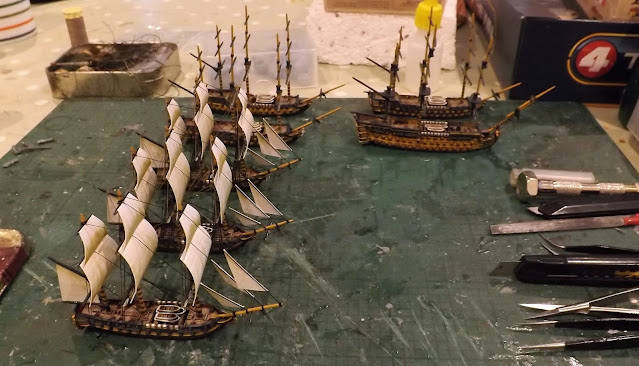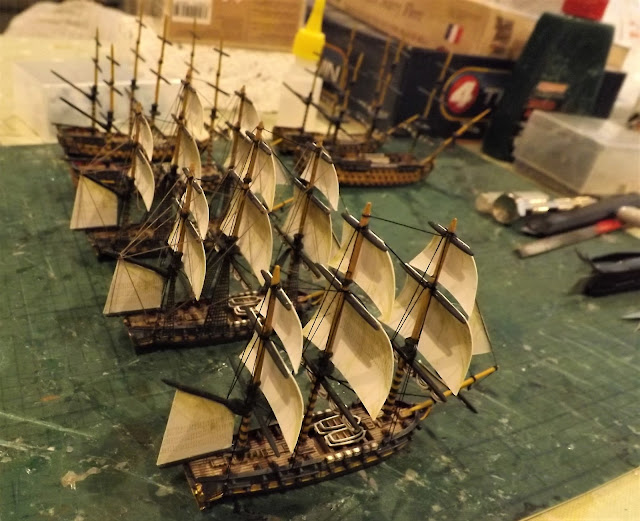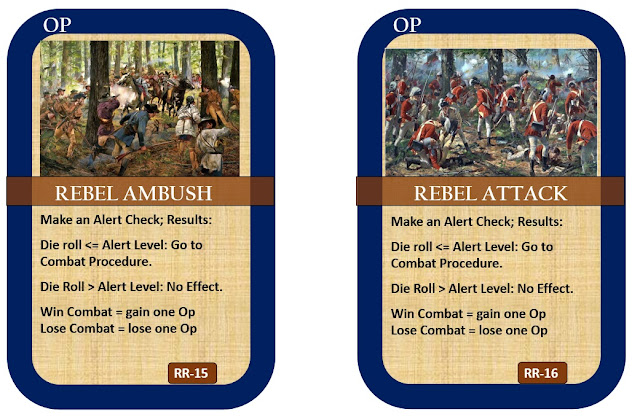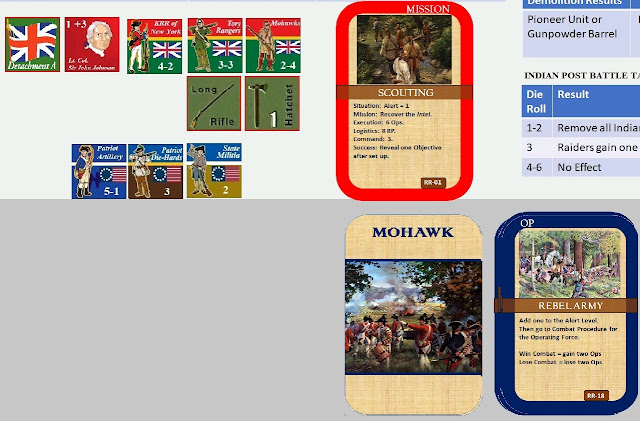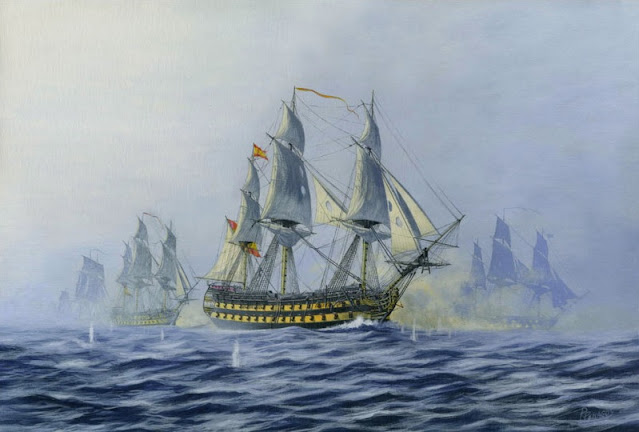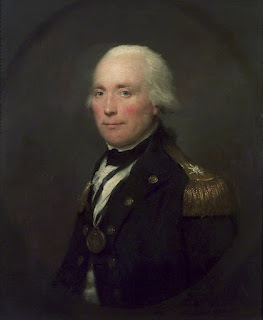With the 225th Anniversary of the Battle of Cape St Vincent fast approaching next month, and my plans to refight the battle at the Devon Wargames Group, I thought I would take a bit of blog space to look at this pivotal naval campaign that changed the course of the war at sea during the French Revolution and laid the ground for the triumph of the Trafalgar Campaign eight years later during the subsequent Napoleonic War.
Two hundred and twenty five years ago Great Britain was four years into a war with Revolutionary France and facing the combined threat of the naval forces of France, Spain and the newly created puppet state of the Dutch Batavian Republic.
The signing of an alliance by Spain with France in July 1796 and her fears for the protection of her Caribbean interests saw her declare war on Great Britain three months later and at a stroke France virtually doubled her naval power in terms of quantity if not quality.
A certain French General Bonaparte was building his reputation at the head of the Army of Italy, with Milan falling to his troops in May 1796 and Leghorn in June, and with just a short step to his birthplace Corsica beckoning, a likely French invasion and the loss of another ally, and a convenient base for the British Mediterranean Naval Squadron.
A simple timeline of events together with the map above, I hope, will illustrate the tumultuous series of events that culminated in the Battle of Cape St Vincent and the dramatic change of initiative that it caused.
1. The Fall of Leghorn, Northern Italy - 30th June 1796
 |
| Entree des Francais dans Livourne (Leghorn), 30 Jun 1796 - Original by Carl Vernet |
The fall of Leghorn was a major blow to the British Royal Navy as the neutral port was as much a meeting place for the British Mediterranean Squadron as it was a source of victuals and stores.
One of the British ships in the harbour when French troops arrived was the frigate Blanche 32-guns, whose compliment included the American sailor-of-fortune Jacob Nagle who wrote about the typical naval sang-froid that greeted the sudden setback;
 |
| HMS Blanche raking the French frigate Pique 36-guns off Martinique in her action fought on the 5th January 1795 - John Thomas Baines (Royal Museums Greenwich) |
'Early in the morning the French began to fire at us, but the guns from the batteries could not reach us by 15 or 20 yards, though their guns were chock'd so that they could not recoil . . . we lay still and washed our decks down as usual in the morning.
At 8 o'clock we piped to breakfast. During this time, finding they could not reach us, they got a long gun from a tower on the S.W. side of the town and brought it to the nearest battery to us and began to open up on us.
The very first shot went over us a quarter of a mile. Immediately the hands were turned up to weigh anchor, got under way, and began to beat out, having a head wind from the westward.
Our vessel being light, we fell to leeward and having to stretch along shore past all the batteries, they kept up a continual fire upon us and we returning the salute till we were out of reach of their guns, which was not less than two hours.'
2. The British reinforce Elba - 10th July 1796
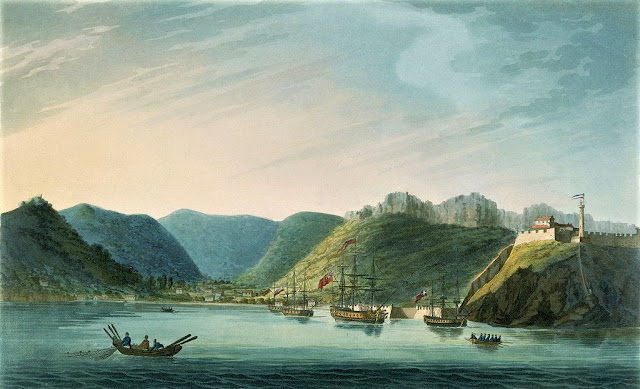 |
| View of the West Side of Porto Ferrajo Bay seen here with the 74 gun Captain (Commodore Nelson) and the frigates Flora, Inconstant and Southampton |
After the fall of Leghorn, Elba looked likely threatened to be the next target for French attacks and the British reacted quickly to reinforce the garrison when on the 10th July Nelson's squadron occupied, with the agreement of the local authorities, the fortress town of Port Ferrajo.
3. August 1796, French Naval Squadron shelters in Cadiz
 |
| View of the Coast of Spain - c1795 - Anonymous (National Maritime Museum) |
Just eight days after the Spanish declaration of war, the first naval engagement occurred on the 13th October 1796 between the former allies when HMS Terpsichore 32-guns under Captain Richard Bowen met and captured the Spanish frigate Mahonesa under Captain Tomas de Ayalde in an action lasting one hour and forty minutes, which left the Spanish ship with 30 killed and 30 wounded for the loss of four wounded aboard Terpsichore, but leaving the Mahonesa so badly shot up that she was never used in British service.
 |
| HMS Terpsichore capturing the Mahonesa off Cartagena, 13th October 1796 - Thomas Whitcombe |
With the Mediterranean fast becoming untenable and the need for the The Mediterranean Squadron to be repositioned so that it could rapidly reinforce the Channel Squadron, the British decided in September to withdraw first to Gibraltar, with Admiral Jervis arriving on December 1st and then sailing on to Lisbon, not before dispatching Nelson on December 12th with two frigates, Minerve 42-guns and Blanche 36-guns, to evacuate Sir Gilbert Elliot and the British garrison on Elba.
4. Anglo-Spanish Naval Engagement - 20th December 1796
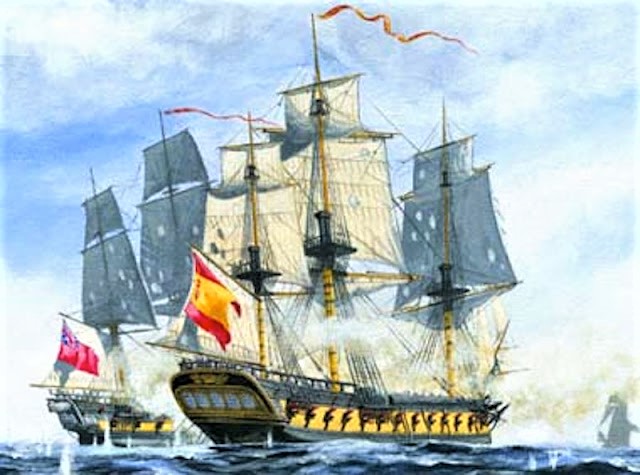 |
| Minerve vs Santa Sabina - Carlos Parilla Penegos |
During darkness and in the early hours of the 20th December 1796 on his voyage back to Elba, Commodore Nelson aboard HMS Minerve and with HMS Blanche in company encountered the Spanish frigates Santa Sabina and Ceres, see the map above for the approximate position for the action.
'On the 19th of December, at 10 p.m., Commodore Nelson, in the 38-gun frigate Minerve, Captain George Cockburn, accompanied by the 12-pounder 32-gun frigate Blanche, . . . fell in with two Spanish frigates. While the Blanche, agreeably to the commodore's directions, wore to attack the frigate to leeward, the Minerve hauled up, and at 10 h. 40 m. a.m. brought to close action the larger frigate, or that to windward.
After a brave resistance of two hours and 50 minutes, during which she lost her mizenmast, and had her fore and main masts shot through in several places, the Spanish 40-gun frigate Sabina, Captain Don Jacobo Steuart*, struck her colours to the Minerve; whose masts, although none of them had been shot away, were, as well as her rigging and sails, much wounded.
*Captain Don Jacobo Stuart, was the great-grandson of King James II of England, Scotland and Ireland, the Catholic monarch deposed by the Protestant William III, and when summoned by Nelson to strike as the Minerve crossed the Santa Sabina's stern quarters ready to rake the Spanish frigate at close range, declined the summons in the most perfect English, rather surprising the British commodore and his crew
Out of her complement, consisting with a few supernumeraries of 286 men and boys, the Minerve had one midshipman and six seamen killed, one lieutenant (James Noble, who had quitted the Captain 74, to serve under Commodore Nelson), the boatswain, and 32 petty-officers, seamen, and marines, or soldiers (a detachment from the 18th regiment), wounded.
The Sabina had commenced the action also with 286 men and boys; of whom she lost, in killed and wounded together, according to Commodore Nelson's letter, 164, but, according to a Spanish account of the action published at Carthagena, 10 men killed and 45 wounded, two of them mortally.
The Minerve mounted her 42 French guns, and the Sabina, 40 guns, 18 and 8 pounders Spanish. The loss and damages of the former show, that the Spaniards pointed the Sabina's guns with more than their accustomed precision. The British, on the other hand, must have felt some disadvantage from the French armament of the Minerve.
Upon the whole, the action was very gallantly maintained on both sides; and it is scarcely necessary to state, that Commodore Nelson, in his official letter, pays the full tribute of praise to his Spanish opponent.
 |
| The young Thomas Masterman Hardy perhaps the most famous Flag-Captain in history, was left with the prize crew aboard the Sabina when the Minerve had to break contact. |
The first and second lieutenants of the Minerve, John Culverhouse and Thomas Masterman Hardy, with 40 petty-officers and seamen, having been placed on board the Sabina, the latter was taken in tow, when, at 4 p.m., a frigate, known by her signals to be Spanish, was seen coming up. The Minerve cast off the prize, which immediately stood to the southward; and at 4 h.30 m. P.M., the former came to action with the 34-gun frigate Matilda.
In half an hour the Minerve compelled this her second antagonist to wear and haul off, and would, most probably, have captured her, had not three other Spanish ships, the Principe-de-Asturias of 112 guns, and the frigates Ceres of 40, and Perla of 34 guns, hove in sight. At daylight on the 20th these three ships were joined by the Matilda; and the Blanche also made her appearance far to windward.
The Minerve had now her own safety to look to; and crippled as she was, it required the greatest exertions to get clear. The squadron chased all day, but at dark gave up the pursuit; leaving the Minerve with much additional damage to her rigging and sails, and with the additional loss of 10 men, including the gunner, wounded.
Lieutenant Culverhouse, now the commander of the Sabina, purposely to draw the attention of the Spaniards from what, on more than one account, would have been by far the more valuable prize of the two, hoisted English over Spanish colours; and the lieutenant and his few hands, although greatly inconvenienced in having the whole surviving Spanish crew, except the captain, in their custody, manoeuvred the prize with the utmost skill and steadiness, not surrendering the Sabina until her two remaining masts went over the side, and left her a mere wreck upon the water.'
In three or four minutes after the Minerve had poured her first broadside into the Sabina, the Blanche was close alongside the frigate to leeward. Eight or nine broadsides, very feebly returned, silenced her; and, calling for quarter, the Ceres hauled down her colours, with a loss, as subsequently ascertained, of seven men killed, and 15 wounded.
But the consummation of the victory was impracticable; the Matilda and Perla, who were almost within gun-shot when the action commenced, being at this time so near that the Blanche was obliged to wear and make sail in the direction of her consort the Minerve.
As, however, the Matilda and Perla did not close immediately with the Ceres, who, although damaged in her rigging and sails, had now got her foresail, fore topsail, and fore topgallant sail set, the Blanche again stood towards the latter. But the Ceres outsailed the Blanche before the wind, and, moreover, was presently joined by the Principe-de-Asturias three-decker, from near the land.
Captain Preston, therefore, although his ship had sustained neither damage nor loss, was obliged to content himself with a trophiless triumph.
The Minerve, in the mean time, had proceeded upon her destination, and on the 26th anchored in the harbour of Porto-Ferrajo. Here the commodore remained, embarking the troops and stores, until the morning of the 29th of January, 1797; when the Minerve, accompanied by the Romulus, Southampton, and Dido frigates, Dolphin and Dromedary store-ships, two sloops, and 12 transports, set sail upon her return.
On the same evening, the Minerve and Romulus parted company from the squadron, and stood towards the French coast. On the 1st of February these two frigates reconnoitred the road of Toulon, and successively the ports of Barcelona and Carthagena, and on the 10th rejoined their companions at Gibraltar.'
4. Nelson's arrival off the Gibraltar - 9th February 1797
 |
| The Frigate Minerve off Gibraltar February 1797 Gordon Frickers |
At the Rock, Nelson learned that the Spaniards had passed through the Straits just five days earlier. Nelson stopped just long enough to take on water and to welcome back Lieutenants Culverhouse and Hardy together with their seamen after being released in an exchange deal with the Spanish.
On the 11th February he sailed again to join Jervis off Cape St Vincent, being chased, as he left, by two Spanish ships of the line that had been waiting close by in Algeciras Bay, and during the chase Nelson was asked by Colonel John Drinkwater, ADC to the British Viceroy of Corsica, Sir Gilbert Elliot if he thought it likely that there would be an engagement, which Nelson thought was quite likely and looking aloft at his commodore's pennant added;
'But before the Don get hold of that bit of bunting I will have a struggle with them and sooner than give up the frigate, I'll run her shore.'
Shortly afterwards they went to dinner, barely starting their meal to be interrupted by the cry 'Man overboard!'
Shortly afterwards they went to dinner, barely starting their meal to be interrupted by the cry 'Man overboard!'
Thinking the Spanish ships were sufficiently far astern, Captain George Cockburn ordered a boat lowered and Lieutenant Hardy clambered aboard to take charge. Minerve was still making headway under full sail against the strong west-east current and with the search taking some time but finding no sign of the unfortunate seaman, the boat was drifting far astern and the Spaniards were closing fast.
Seeing this Nelson exclaimed 'By God I'll not lose Hardy!' According to Drinkwater, Nelson turned to Cockburn to order 'Back the mizzen topsail!', more likely to have been back the topsails to have got the necessary reduction in speed with the current then adding to the eastward momentum of both the ship and boat.
Hardy and the boat crew were retrieved almost under the guns of the leading Spanish 74-gun Terrible which surprisingly reacted to the Minerve backing her sails and slowing, by performing a similar manoeuvre in response. Another case of fortune favouring the brave.
On the night of the 12th February the Minerve found herself in far greater danger as the flickering lights and occasional looming hulk of an unidentified ship of the line indicated to Nelson that he had found the Spanish fleet which he kept track of until they turned west, indicating their course towards Cadiz, before Nelson proceeded to rendezvous with Admiral Jervis, scrambling up the sides of HMS Victory the next morning to report and pinpoint the Spanish position, whilst Culverhouse and Hardy were able to update the admiral on their numbers and state of morale after their recent few weeks in Spanish custody.
Jervis had been at the rendezvous point since the 6th February, the day the Levanter wind started to blow his enemy towards him and on arrival had met with Rear-Admiral William Parker leading a five ship squadron of reinforcements aboard his flagship the 98-gun Prince George, the other four being the 90-gun Namur, and three 74s, Colossus, Irresistible and Orion.
On the 9th of February Jervis learnt from his frigates that the Spanish fleet had passed through the Straits on the 6th, almost certainly headed for Cadiz, leading to much disappointment at another likely missed opportunity to catch the enemy at sea. On the 11th February, the Elba convoy arrived reporting that the Spanish fleet was close but in much disorder leading to Jervis signalling the fleet to 'Clear for Action', with Midshipman George Parsons leaving a vivid account of preparations aboard the 98-gun Barfleur;
'Grinding cutlasses, sharpening pikes, flinting pistols, among the boarders; filling powder, fitting well-oiled gunlocks to our immense artillery by the gunners, sling our lower yards with chains; and, in short, preparing a well organised first-rate for this most important battle.'
The course was south-east before turning south-west towards the enemy and between them and sanctuary in Cadiz. On 13th February, Nelson arrived with more precise details of Cordoba's position. The next day would be St Valentines Day.
 |
| The fleets set up for Cape St Vincent at JJ's Wargames HQ as part of the pre-game planning - more anon. |
In a follow up post, I'll take a look at my pre-game planning and preparation in time for our refight at the Devon Wargames Group on February 12th 2022.
Sources consulted for this post:
The Trafalgar Companion - Mark Adkin,
1797 Nelson's Year of Destiny - Colin White
Fleet Battle and Blockade, The French Revolutionary War 1793-97 - Chatham Pictorial History
The Naval History of Great Britain - William James







